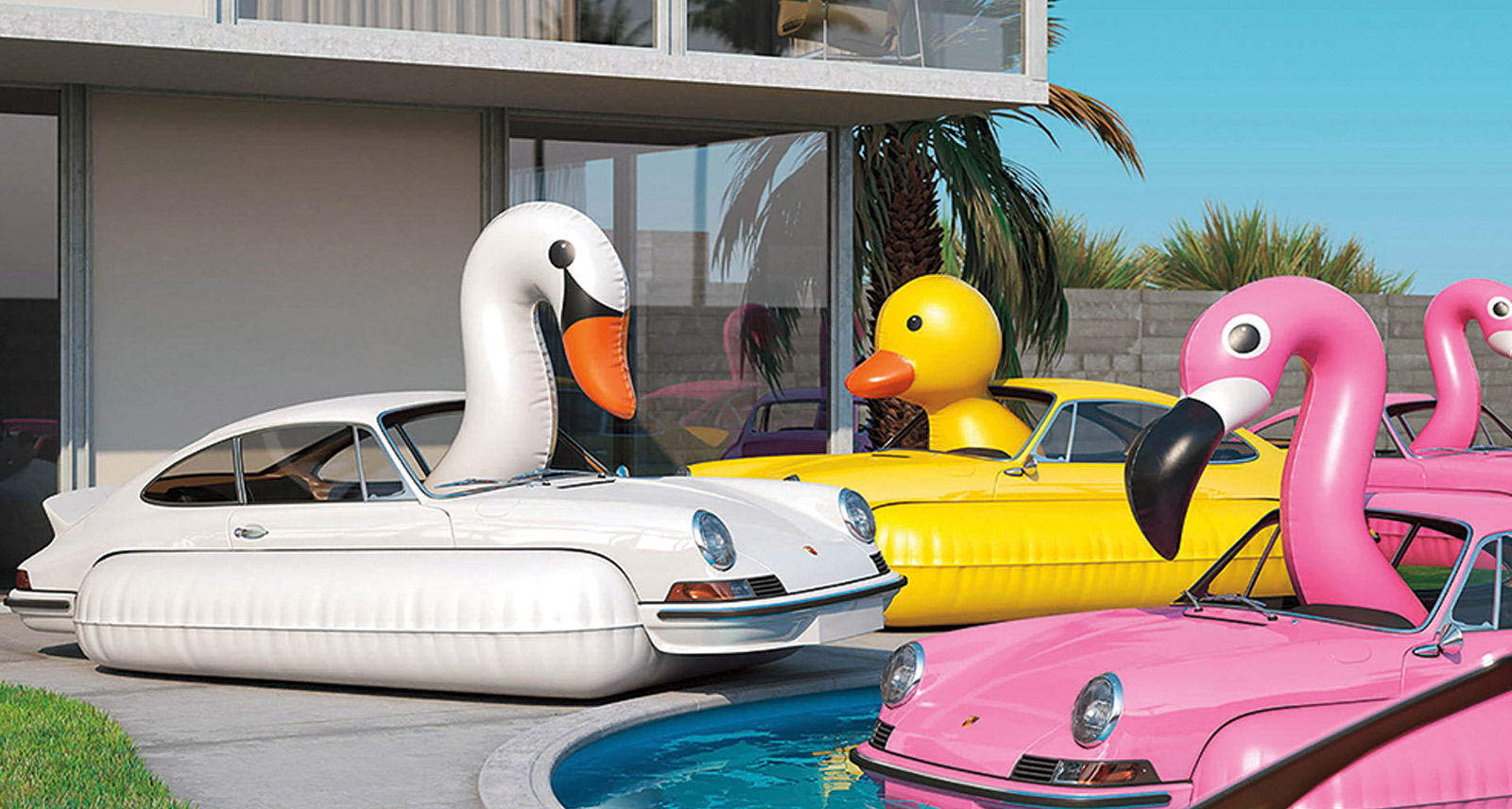Artist Chris Labrooy on Drowning Porsches and “Automotive Transgressions”
Cars are meant to be fun. But we tend to forget that as we get older and they become burdensome expenses, or just vehicles to get around in. Chris Labrooy, however, is still playing with cars — and sneakers, and typography, and sometimes buildings. The 41-year-old Scottish artist and designer’s surreal, dreamlike work has caught the eye of clients from Nike and Apple to Porsche and Lamborghini, and has swept across social media, too. You’ve probably seen his image of 12 Porsches in a pool, or the one of two old Pontiacs, abstracted and intertwined, floating above a Brooklyn street on a brisk evening.
“Because I use CGI, there are no rules,” Labrooy says of his preferred medium. The result is something like digital sculpture: “You can do stuff from illustration — where you can just dream in a dream world — but then you can render it and make it look more photographic, like something from the physical world,” he explains via Zoom, speaking from his beautifully spare home office in northeastern Scotland.
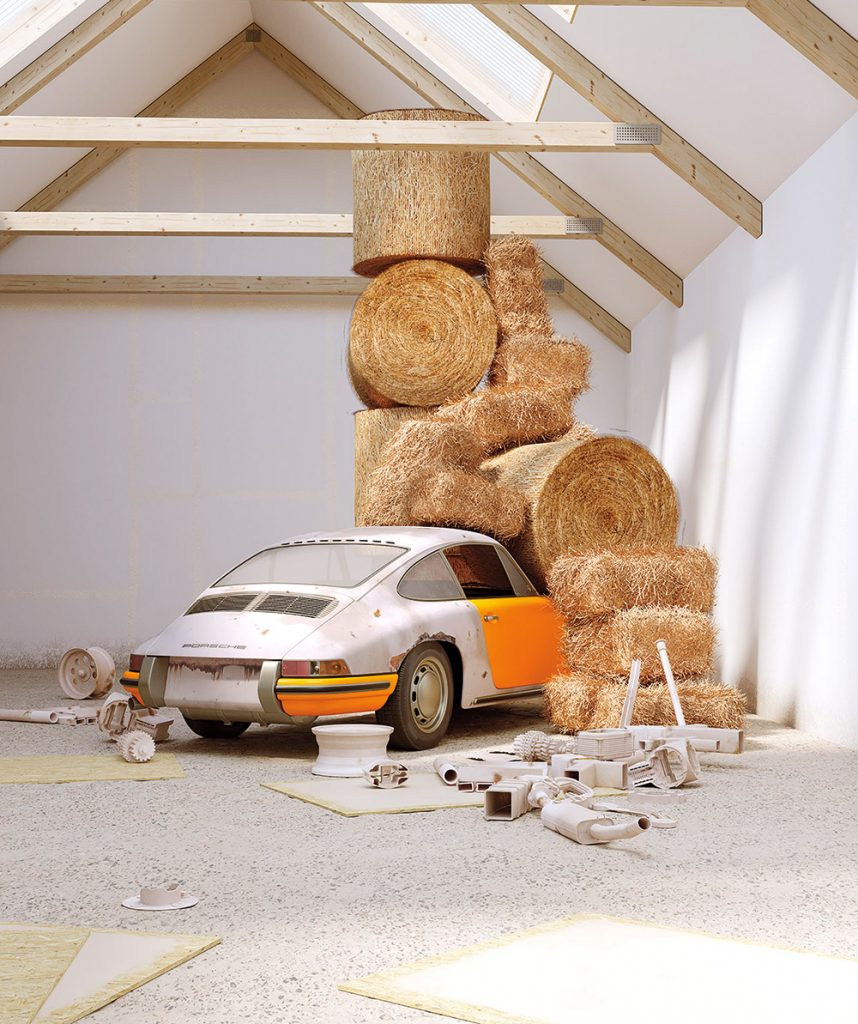
Labrooy delved deeper into the digital world after graduating from London’s Royal College of Art, where he studied product design. Initially, software offered a more three-dimensional way to visualize product ideas, but he quickly realized that the 3-D render could be the finished work. “You can really just stop and make pictures,” he says.
He began playing with cars as a personal project. (In truth, he began playing with cars as a child and has been doing it on and off ever since.) There was the pink toy Cadillac, he remembers, and a little Ferrari Testarossa, and one of those colourful felt mats with a map of a town on it. “I had a car in my hand from a super young age,” he confirms.
These days, his toy cars are more surreal. Freed from the felt mat, they can do things only possible on a computer, like hover in mid-air, or twist like Gumby, or end up packed into a pool in Palm Springs. He calls these “Digital Automobile Transgressions.”
And they are transgressive. One piece in particular provoked outrage among people who, somewhere along the line, forgot cars are meant to be fun. “It was almost offensive when I did the 12 [Porsche 911] RSs in a pool,” he says. (For the non–Porsche fanatics, these ’70s classics are extremely rare and worth around $1 million.) “A lot of people thought the image was real,” Labrooy remembers. Perhaps they imagined he’d actually drowned $12 million worth of vintage machinery in a Palm Springs swimming pool. Or, worse, perhaps they were offended that Labrooy had dared even imagine such an act. “There were loads of hardcore Porsche fans who weren’t happy about it — they were pissed off,” he says. It must’ve been like seeing their sacred cows butchered. “But, on the flip side,” he says, “there were a lot [of Porsche fans] who liked it.” Other people actually wrote to inquire if it was a physical installation open to the public.
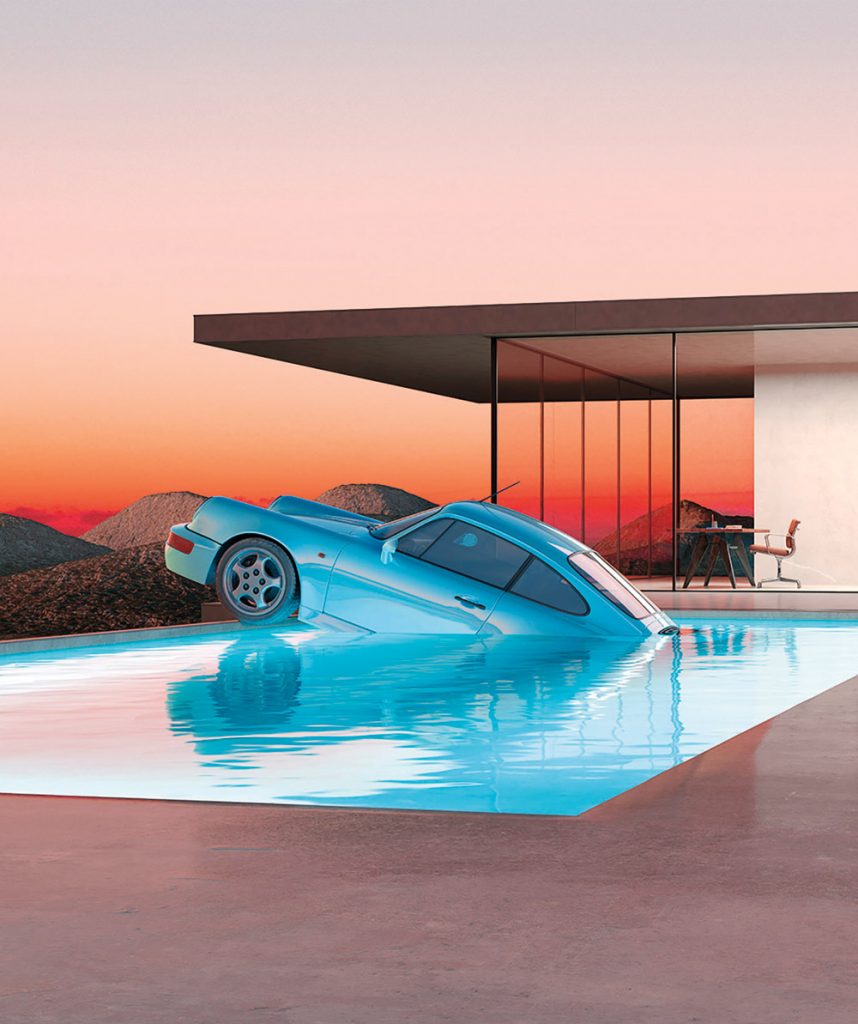
The golden desert of Palm Springs might seem like an odd choice of setting for an artist living in a converted barn near the Scottish coast, but it’s one featured prominently in his work. On his visits there, Labrooy is reminded of Syd Mead’s sci-fi utopias. “[Palm Springs] was built on optimism, and it’s just a really, really nice place to be. All the mid-century design, architecture — I’m a sucker for that stuff,” he says. “There’s something really comforting about those buildings in those spaces.” When you’re away from a place like that, it’s easy to see how it could take on a dreamy, fantastical quality.
To hear Labrooy tell it, the dreamy images he creates just sort of happen. “Everything’s really intuitive,” he says. “I’m, like, in the computer…literally just experimenting with ideas. It’s very visual and it’s all about aesthetics and combining different elements; there’s not necessarily an intention or a meaning, so it’s quite open [for people to interpret],” he explains.
In another series of images, Labrooy mashed up inflatable swans and vintage Porsche 911s. The results are like stills from a dream: jarring at first, but you can’t help but stare.
“An inflatable object — they’re kind of dumb things in a way, like a throwaway object,” he says. “It’s quite interesting to juxtapose that with a 911, because it’s obviously an amazingly well-designed, incredibly engineered object. It’s like the complete opposite of something so stupid.” Porsche, to its credit, wasn’t offended by his work at all. In fact, it was quite enthusiastic, even commissioning Labrooy to create images for the launch of the Taycan, the brand’s first all-electric car.
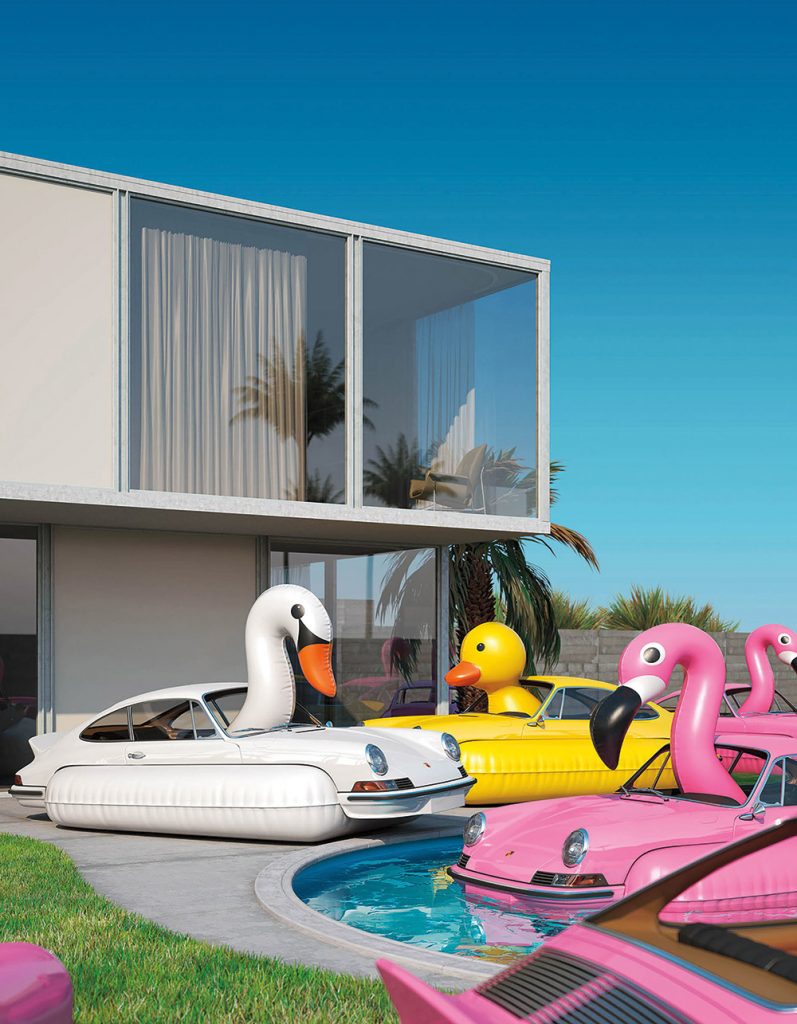
“A company like Porsche, what do they have to worry about? It’s such a strong brand,” he says. “The 911 has this cool factor, you can pretty much do anything with it. It’s probably the most confident car in the history of cars. It’s so sure of itself. You can’t really damage it. It’s like a bombproof object.” In case you can’t tell yet, he’s a fan: he’s on his third Porsche 718 Cayman, a red GTS 4.0 with manual gearbox. (In cars, as in art, his taste is impeccable.)
Because Scotland is so far north, there’s daylight at five o’clock in the morning during summer. Labrooy likes to drive then, because it’s quiet. The roads in Scotland are among the best for driving in the world, flowing up and around mountains with long sight-lines and open corners. “I don’t necessarily know my way or where I’m going sometimes,” he says. “Somehow, it all just connects. I just kind of find my way.”
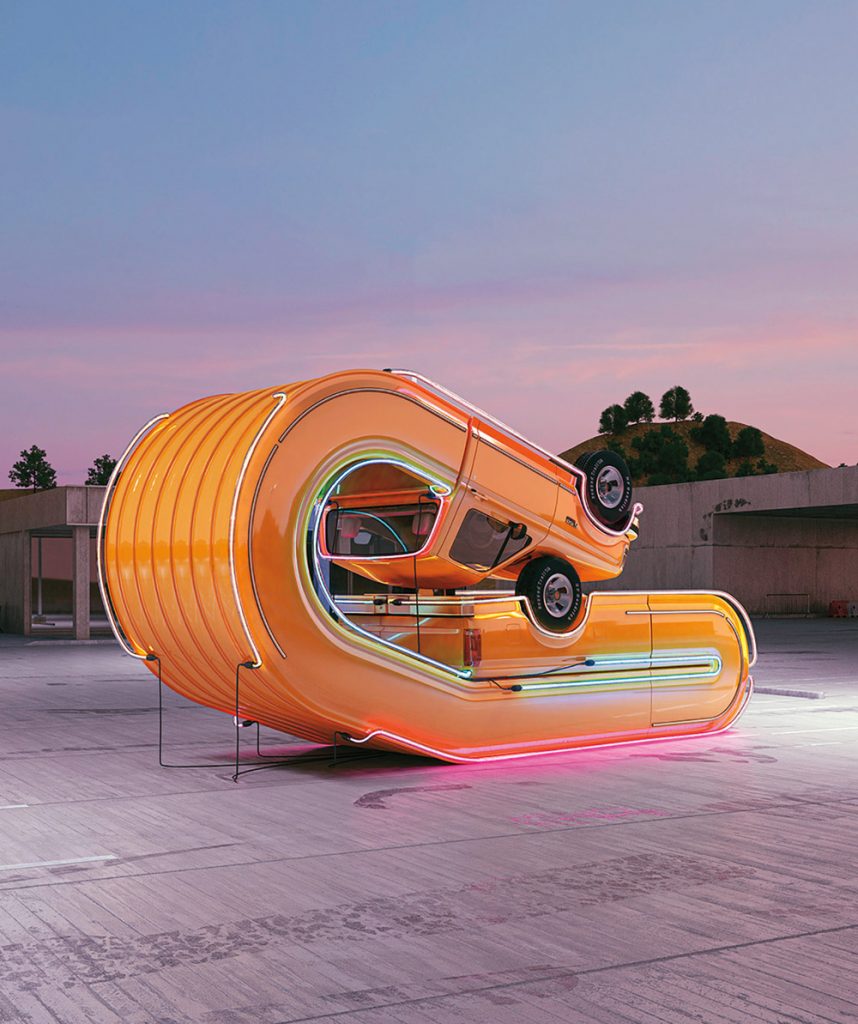
Lead image courtesy of Chris Labrooy.
